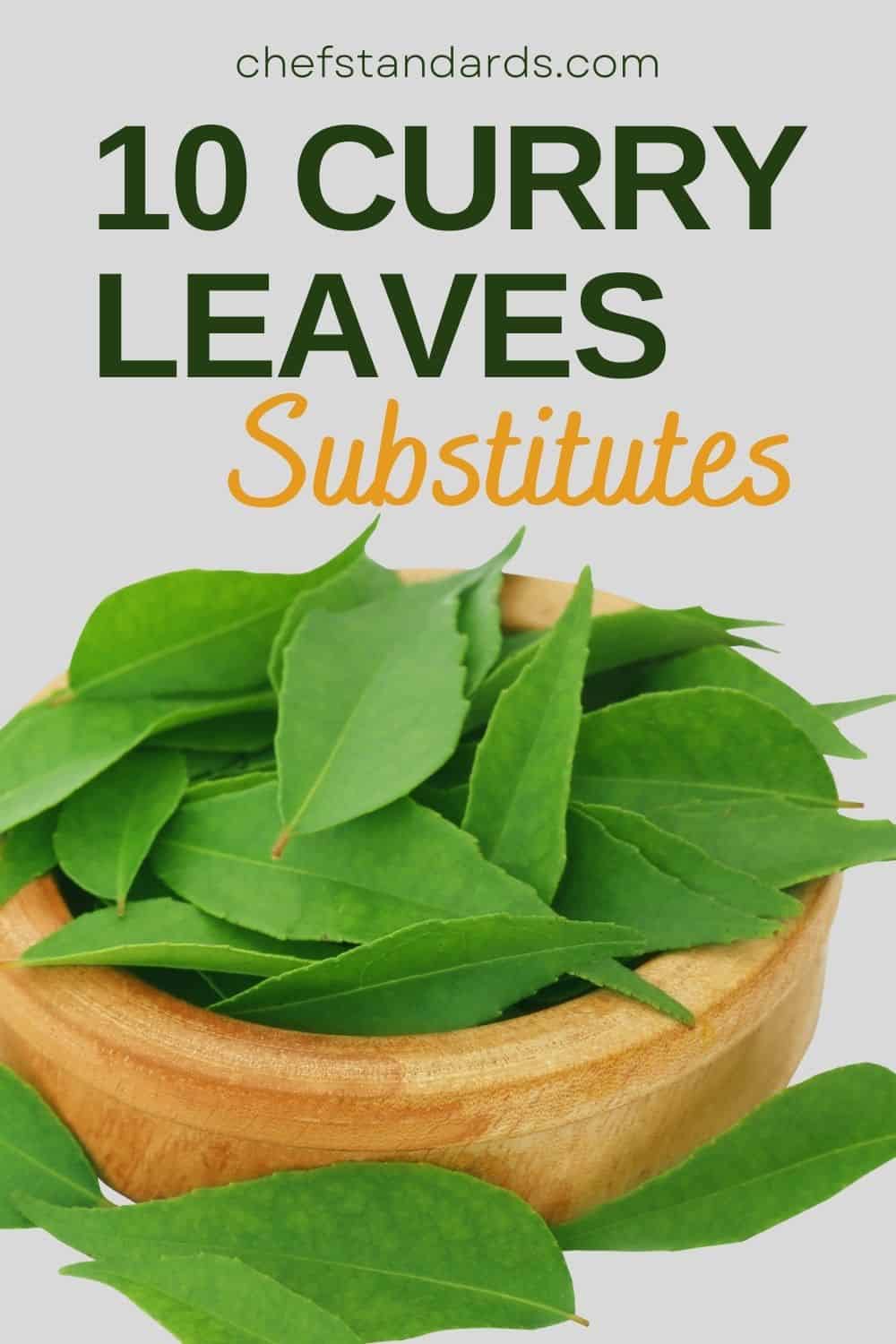If you are cooking some type of delicious Indian or Southeast Asian dish, one of the best additions is certainly curry leaves because, aside from flavor and aroma, they will also add nutritional value.
However, there can be a time when you don’t have any at hand, or maybe you live in an area where these aromatic herbs are simply not available.
Because of that, in this article, we will explore a variety of curry leaves substitutes that will add a similar unique flavor and aroma to your dishes, without the need for actual curry leaves.
Important Note: Do not use curry powder instead of curry leaves because they are two entirely different things, i.e. curry leaf is a herb that grows on the curry leaf tree, while curry powder is a mix of different ingredients, including turmeric, coriander, fenugreek, cumin, and cayenne.
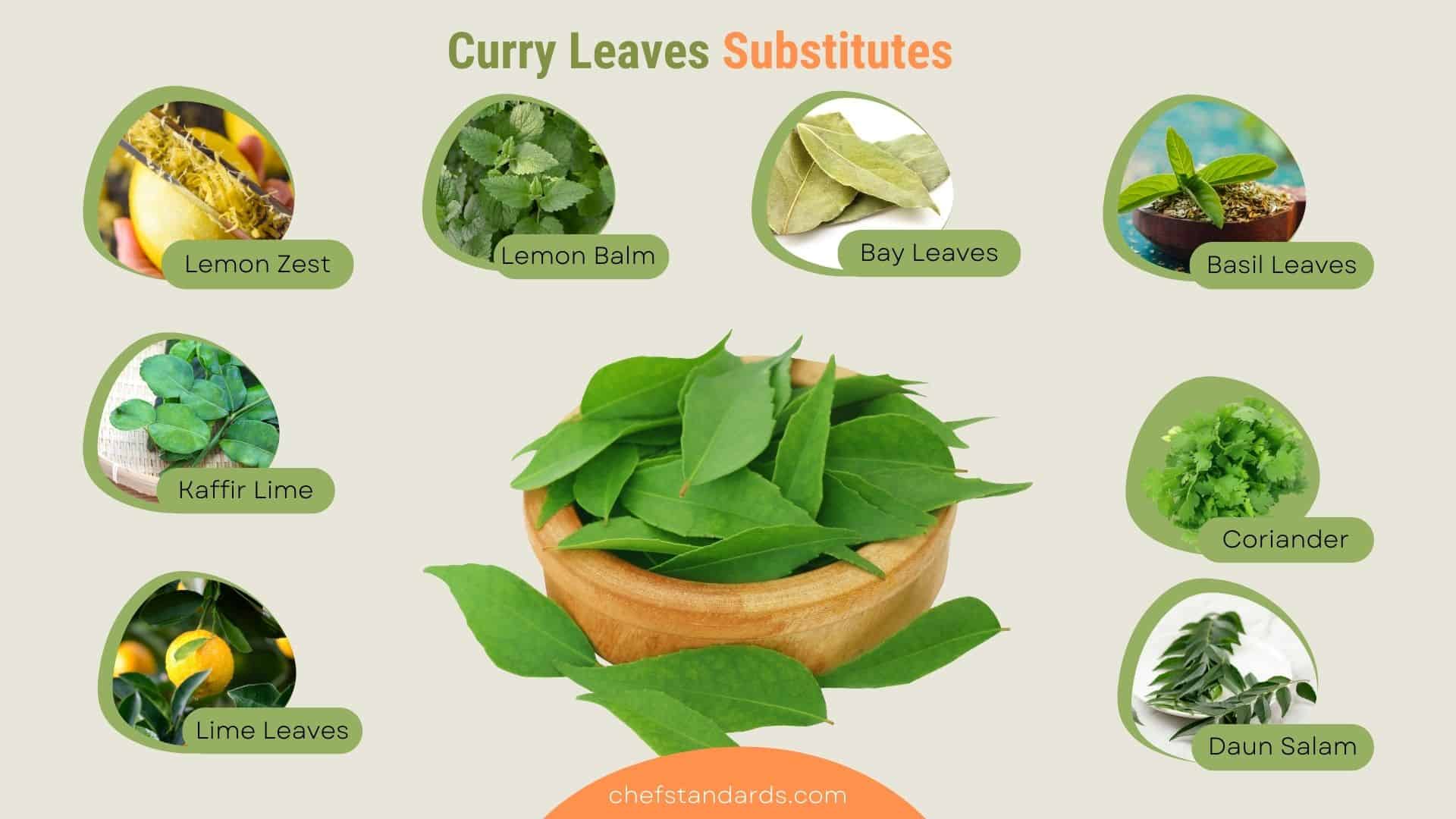
1. Lemon Zest
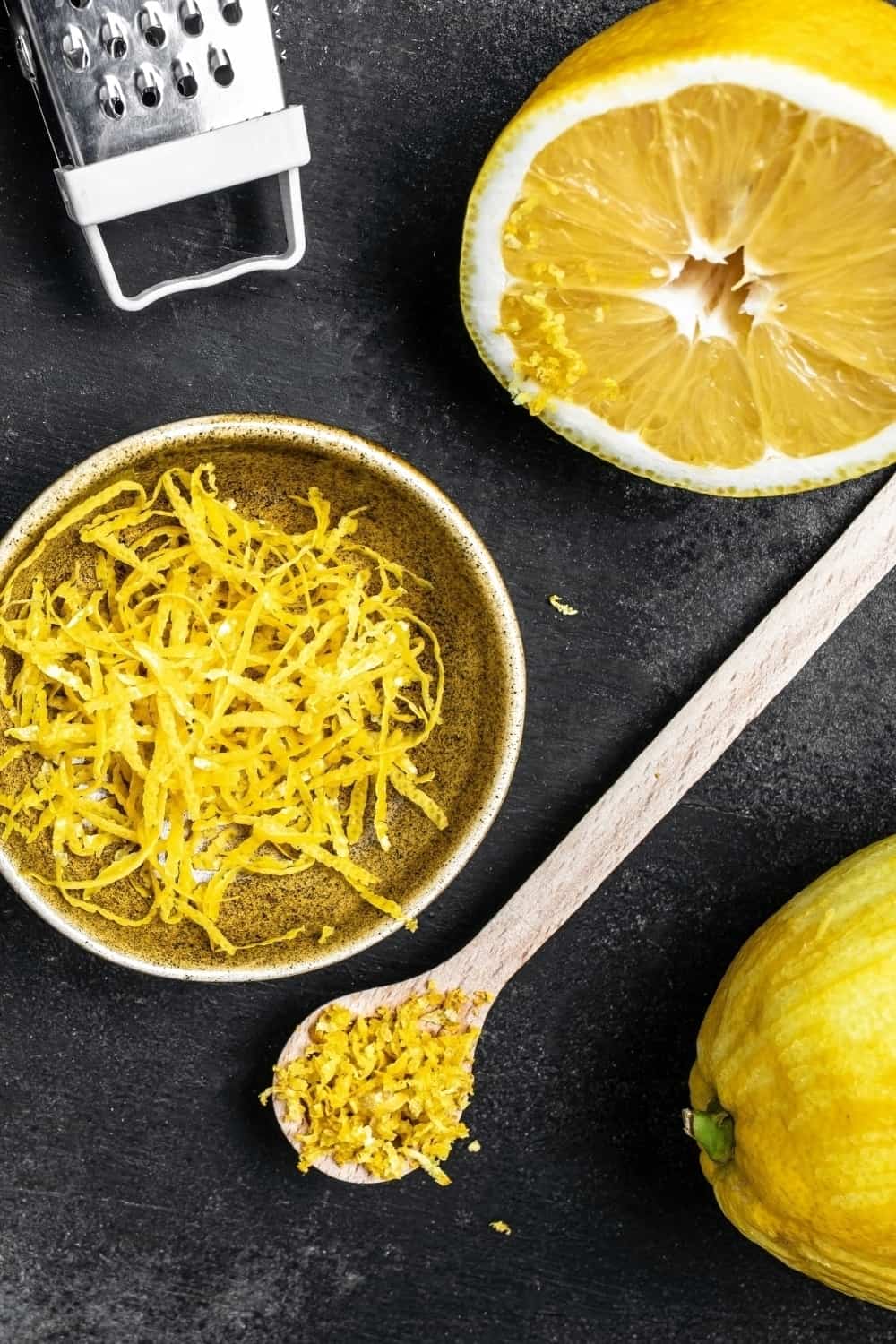
Although there is no ideal substitute for curry leaves, there are some that come quite close and one of those is lemon zest.
This outermost layer of the peel of a lemon is its colorful, fragrant part that has a strong, citrusy flavor and aroma, the perfect combo to enrich almost any type of dish.
Pros:
• It will add a bright and tangy citrus flavor to your dish, as well as complexity, just like curry leaves.
• Lemons are highly available and lemon zest is also readily available in most grocery stores and supermarkets.
• Aside from the availability, lemons are also quite affordable.
Cons:
• Although they can also add flavor and aroma to your dish, the exact flavor profile is not the same and, if you add it too much, it may significantly alert the taste of the dish.
• The strong citrus flavor may easily overpower the other ingredients in some types of dishes.
• Lemon zest doesn’t work in all dishes as a substitute, especially in those where the unique flavor and aroma of curry leaves is required.
How To Use It As A Substitute:
First, it is very important to buy unwaxed lemons because, when you peel them, you don’t want that wax in your dish.
Also, I would recommend you to buy fresh lemons and, if possible, organic ones because of nutrition.
Once you peel them, use that zest in small amounts, i.e. for every 1 curry leaf in a recipe, you can use ¼ to ½ teaspoon of lemon zest, according to your preference.
Finally, you don’t want to add it to your dish at the beginning of the cooking process, but at the end to preserve the flavor and aroma.
Lemon zest pairs well with seafood, poultry, and vegetable dishes, but you can also use it in curries, soups, stews, sauces, and dips. Dips made with yogurt are especially suitable.
Extra Tip: If you want your lemon zest to truly thrive in your dish, it is not a bad idea to combine it with some chopped basil leaves in order to achieve that nice citrusy flavor and, at the same time, balance the strong flavor of basil leaves.
2. Bay Leaves
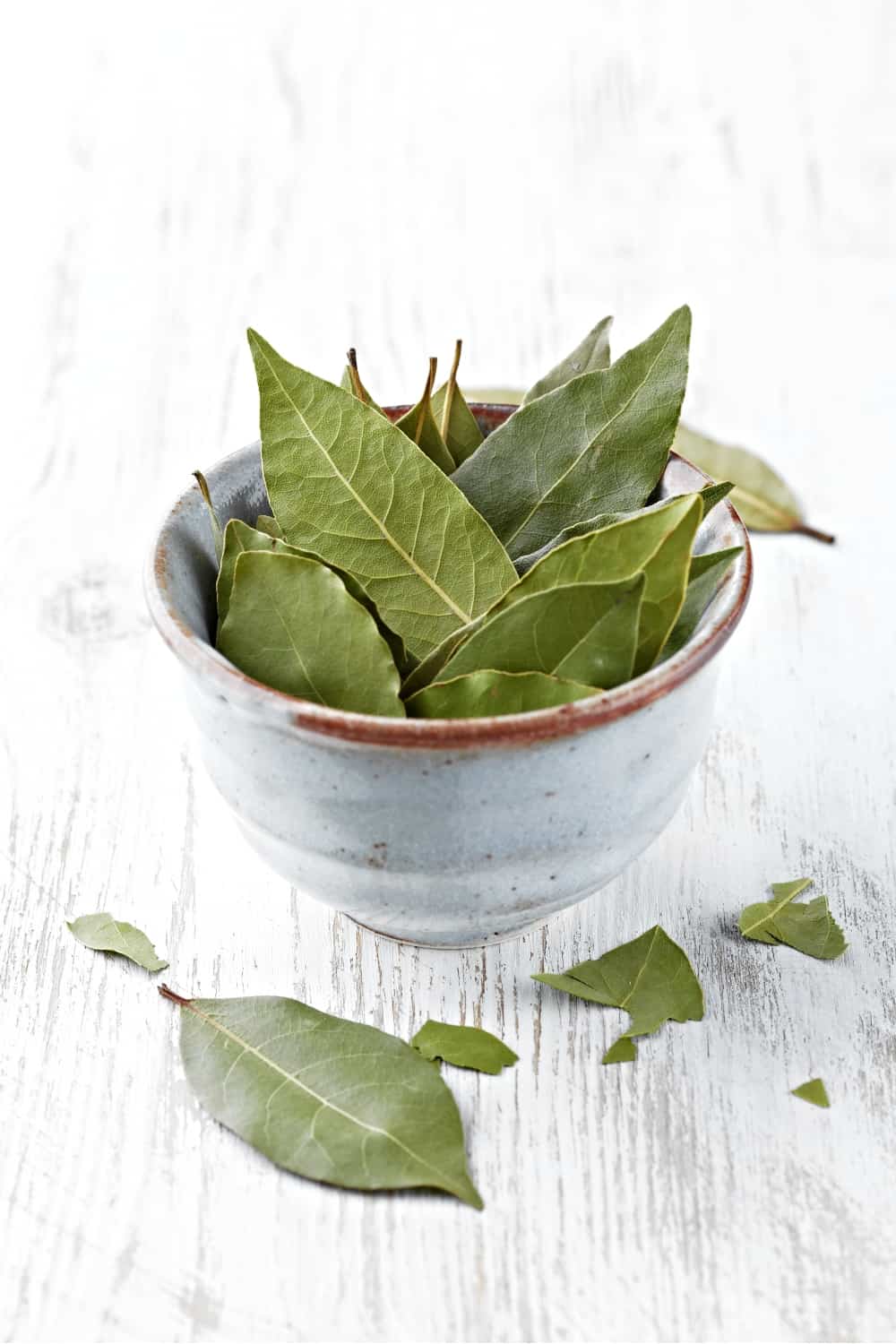
If you are a fan of Mediterranean cuisine, you must certainly have a cup of bay leaves on your kitchen shelves. These leaves are known as the Mediterranean version of curry leaves, so it is not a surprise that they are ranking this high on the list.
Pros:
• Bay leaves have a minty yet deep and earthy aroma, as well as sweet notes and a savory finish that can boost the flavor of almost any dish.
• Bay leaves are more readily available than curry leaves in many parts of the world so they can be easier to find.
• One of the most important characteristics that make bay leaves stand out is the fact that they are quite versatile, i.e. they can be used in a wide range of dishes, from soups and stews to marinades and sauces.
Cons:
• Although they possess a rich flavor profile, it is not the same, so they won’t replicate the exact flavor of curry leaves in your dish.
• Bay leaves have a very strong flavor, so you will have to use them in moderation to avoid overpowering other flavors in a dish.
How To Use It As A Substitute:
Bay leaves do not require any special preparation ahead of adding them to your dish.
However, you have to know how much you must use them in place of curry leaves. Honestly, that mostly depends on the recipe, but you have to be aware of the fact that bay leaves have a quite strong flavor, so it is best to use them in moderation.
From my own experience, it is best to use about ¼ of bay leaf for every curry leaf. This will ensure that your dish is enriched with flavor, but not overwhelmed.
Add bay leaves early in cooking to allow their flavor to infuse into the dish as it cooks.
You can use these flavorful leaves in many dishes but, when substituting for curry leaves, it is best to add them to tomato-based dishes, soups, stews, rice dishes, marinades, or roasted meats and vegetables.
They are also great in the combination with lentils, chickpeas, and beans.
Extra Tip: Bay leaves are quite tough for chewing, so it is best to remove them from your dish before serving.
See Also: 10 Bay Leaf Substitutes To Spice Up Your Cooking Game
3. Kaffir Lime Leaves

Kaffir lime, also known as Makrut lime, also originates from Southeast Asia and it is one of the most popular variants of lime in that part of the world. It is not a surprise that they found their place on the list since they both possess very similar flavors.
Pros:
• Kaffir lime leaves have a very similar flavor profile to curry leaves that can be described as citrusy and floral, with slightly bitter and herbaceous notes.
• Kaffir leaves are also one of the most versatile ingredients, especially in Southeast cuisine.
• Aside from their rich flavor profile, they are also quite nutritious. According to research, these leaves are found to have strong antibacterial and antioxidant properties. (1)
Cons:
• You won’t be able to find Kaffir lime leaves that easily, especially if you don’t have access to specialty grocery stores.
• Kaffir lime leaves have a very strong flavor, much stronger than the flavor of bay leaves, which can be overpowering if you use too much.
How To Use It As A Substitute:
When choosing the right Kaffir lime leaves, it is best to give the chance to fresh leaves over dried ones because they are richer in flavor.
Once you get your hands on the fresh version, you can eat them in a similar way to curry leaves, i.e. add them to the dish towards the end of cooking to preserve the flavor. It is up to you to decide whether you add them whole, sliced, or torn.
You can freely use the same amount of Kaffir lime leaves in your dish because the flavor profiles are almost the same.
The only difference is the fact that leaves from the Kaffir lime have a little more citrusy flavor, but it is not a big difference really.
You can use these leaves in almost all of the recipes that call for curry leaves. They work best in stir-fry dishes, rice dishes, curries, and soups. You can also add them to fish and meat dishes and almost any type of Indian and Thai dish.
Extra Tip: Kaffir lime leaves work particularly well in the combination with coconut milk because their bright and citrusy flavor compliments the rich and creamy flavor of coconut milk.
If you want to learn more about Kaffir lime leaves, watch this video:
4. Lime Leaves
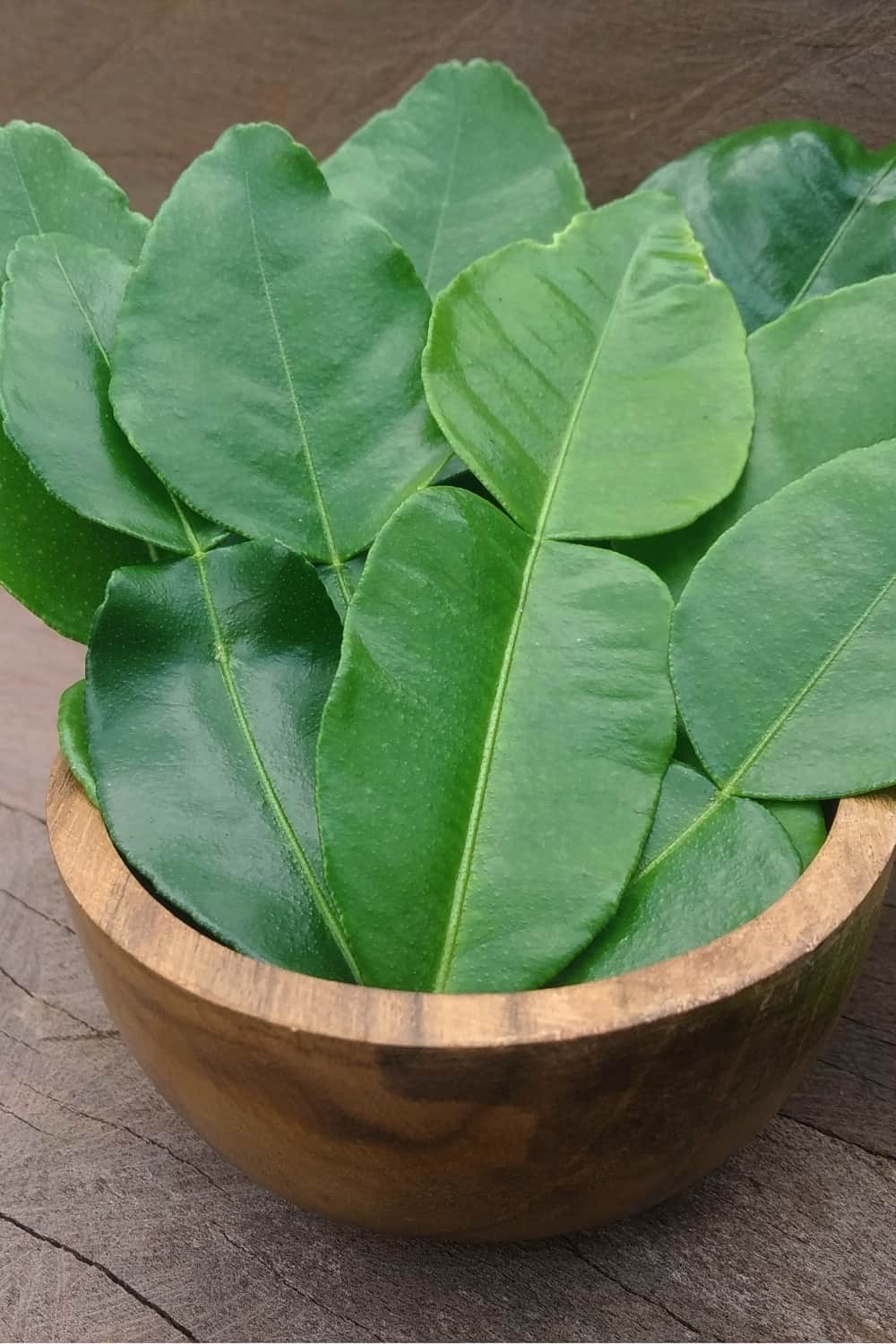
Although you may think that I already listed them, lime leaves are actually not the same thing as Kaffir lime leaves. These leaves usually come from Persian lime trees and they have a different flavor profile.
However, they can substitute curry leaves to some extent as well.
Pros:
• If you don’t have any curry leaves at hand to provide your dish with that citrusy flavor, lime leaves can successfully do the work.
• Lime leaves are one of the best types of leaves to add a bright, fresh flavor to stir-fries, soups, and curries, especially if they are combined with other herbs and spices.
• Although it can sometimes be challenging to find lime leaves, they can be more easily found than curry leaves or Kaffir lime leaves.
Cons:
• It is true that they can add a nice flavor and citrusy aroma to almost any dish, but you have to be aware of the fact that the flavor profile of lime leaves is different from that of curry leaves.
• Lime leaves are usually more expensive than curry leaves in some areas, especially if they are imported from other countries.
How To Use It As A Substitute:
There are not too many things you must do to use lime leaves as a substitute for curry leaves.
First, it is best to find fresh lime leaves if you can, and, just like Makrut species, you can grind them with a mortar and pestle or slice them using a knife or a scissor.
The general rule of thumb is to use 6 lime leaves for every 10 curry leaf. Just make sure that you don’t overdo it because they have a very intense and pungent aroma, as well as quite a strong citrusy taste.
The right time to add them to your dish mainly depends on the recipe, but I would suggest you add them towards the end of the cooking process to prevent them from becoming too wilted or overcooked.
It is best to add them to those dishes where a citrusy, floral flavor is desired. They work well in stir-fries, soups, and curries.
Extra Tip: Sometimes, lime leaves alone are not enough, so it is not a bad idea to combine them with some other seasonings. Those seasonings may include lemongrass, ginger, coriander, and garlic.
5. Lemon Balm Leaves
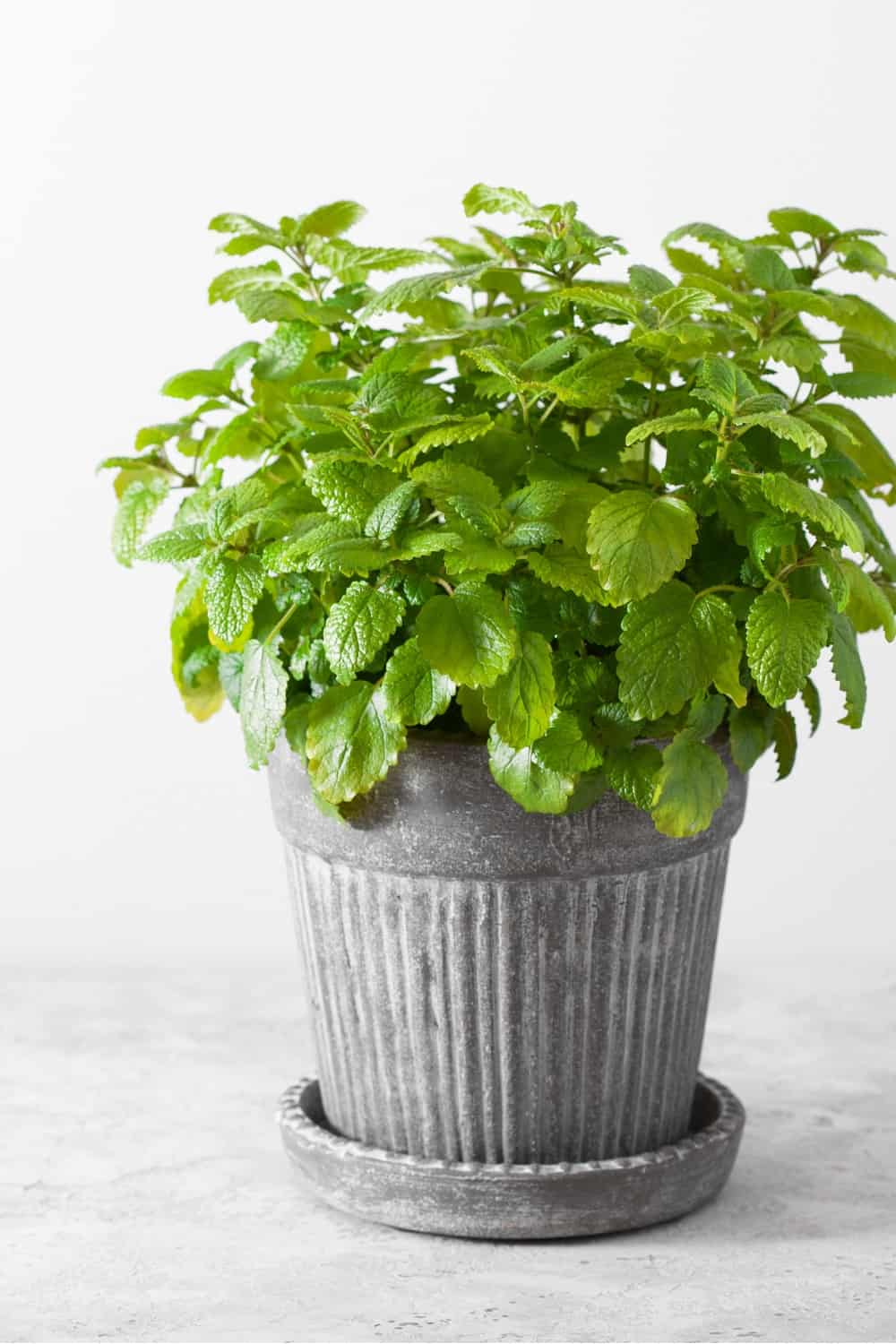
Another leaf on the list of best curry leaves substitutes is lemon balm leaf. Lemon balm also known as melissa is a herb that belongs to the mint family and it is quite similar to mint itself. It has that recognizable minty flavor.
Pros:
• The flavor profile of lemon balm leaves is a nice combo of sweet, lemony flavors and hints of mint, which can complement certain dishes and add a fresh, herbaceous note to the overall flavor profile.
• Lemon balm leaves are easy to come by and you may even have some growing in your backyard because it is not difficult to grow and maintain them.
• Lemon balm leaves are also quite nutritious and they possess a high amount of antioxidants. Research shows that consuming lemon balm can have great benefits for your brain and nervous system in general. (2)
Cons:
• Both types of leaves will provide your dish with citrusy notes, but I have to emphasize that curry leaves have a slightly bitter and pungent flavor, which is quite important to many Southeast dishes where it plays the main role.
• Lemon balm leaves are not so versatile when used as a substitute for curry leaves, i.e. they can not be used in certain dishes, such as Indian or Sri Lanka curries for example.
How To Use It As A Substitute:
When using lemon balm leaves as a substitute for curry leaves, it is important to use them in moderation because of their strong lemony flavor that can overpower other flavors in the dish.
However, that doesn’t mean you shouldn’t use it as much as you would use curry leaves because that is actually necessary to achieve the same depth of flavor since the overall flavor profile is a little bit milder.
Also, it is best to add these leaves toward the end of the cooking process to preserve their flavor and aroma.
Lemon balm leaves can add a wonderful citrus flavor to salads, soups, stuffing, and sauces. It is one of the most preferable ingredients in American cuisine.
Extra Tip: If you have problems with stress, anxiety, insomnia, or indigestion, it is best to start adding some lemon balm leaves to your dishes because they will help with those specific problems.
6. Basil Leaves
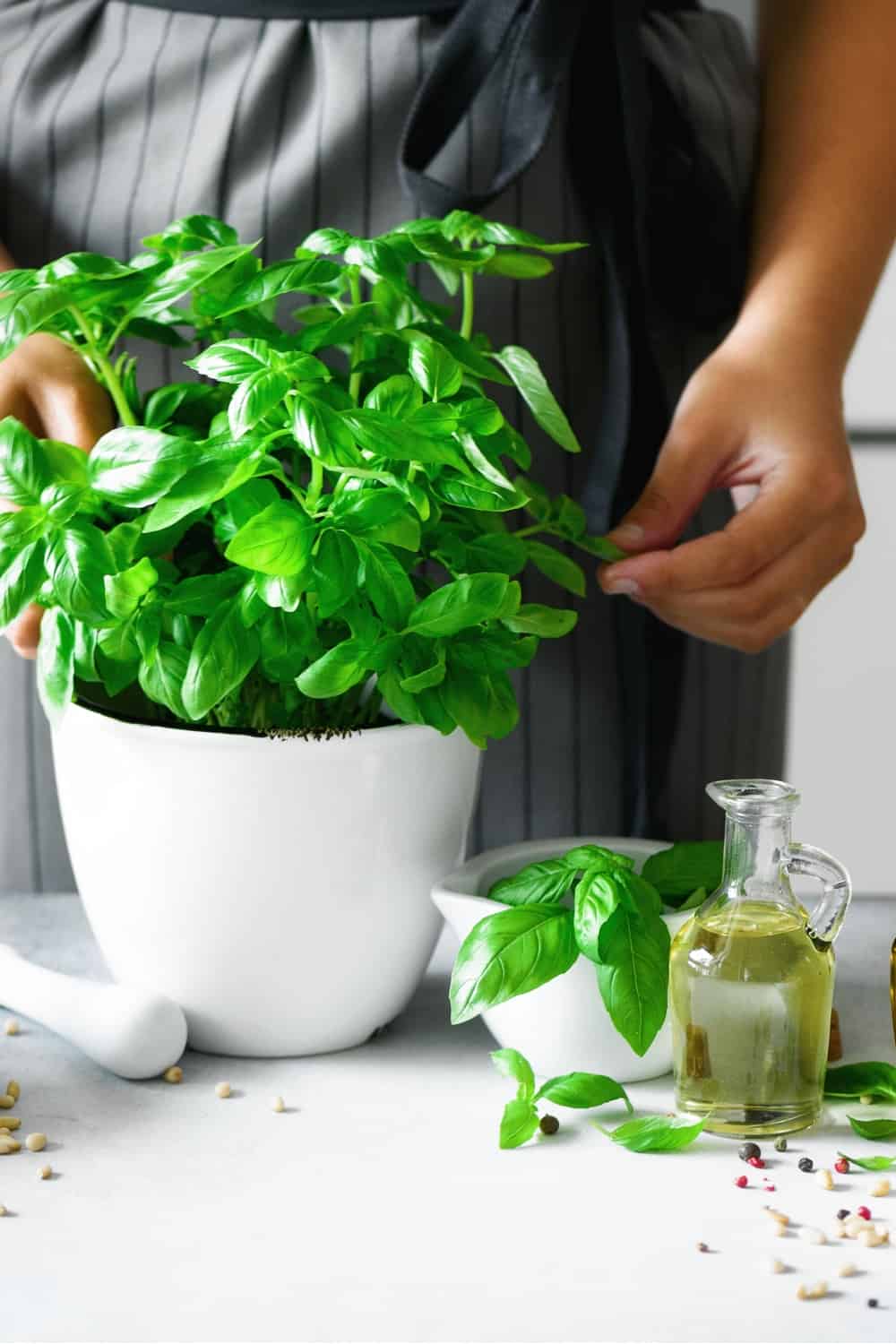
It is one of the most popular Mediterranean herbs. Basil leaf is mostly associated with Italian cuisine, but it can also do decent work when it comes to dishes where curry leaf is the main star. You just have to know how to use it.
Pros:
• Nice flavor profile which is the combination of sweet and slightly peppery flavors that can complement many dishes, especially those that come from Italian and Mediterranean cuisine.
• You can find basil leaves in many grocery stores and supermarkets and they are usually more available than curry leaves.
• Basil leaves can be used in so many different types of dishes to enrich their flavor, including soups, salads, and various types of pasta dishes.
Cons:
• Although the combo of flavors that basil leaves can offer is nice, they have a different flavor profile than curry leaves, which can affect the overall taste of the dish.
• Basil leaves are very versatile but they are not ideal for all dishes when it comes to substituting curry leaves, especially for some Indian and Sri Lanka dishes.
How To Use It As A Substitute:
Basil leaves are quite similar in appearance and texture to curry leaves, but the flavor profile that is quite different is the main problem.
Luckily, that is also solved thanks to some experimentation. Namely, basil leaves are certainly very fresh, just like curry leaves, but they don’t have that same citrus twang.
So, some chefs added the zest of the lemon or lime to it and it worked. They created a flavor profile that can mimic that of curry leaves very well.
When substituting, you can freely add the same amount of basil leaves as the recipe species for curry leaves and add a pinch of lemon (or lime zest) to create the perfect flavor profile.
Basil leaves can be used as curry leaves substitute in salads, soups, curries, dips, and in dishes from both Asian and Mediterranean cuisine respectively.
You can also use basil leaves when making pasta and pizza.
Extra Tip: If you are making a dish where those citrusy flavors are very important, or you just want to make your dish extra flavorful, my suggestion is to add some lemon or lime juice as well to really make the flavors pop.
7. Coriander Leaves
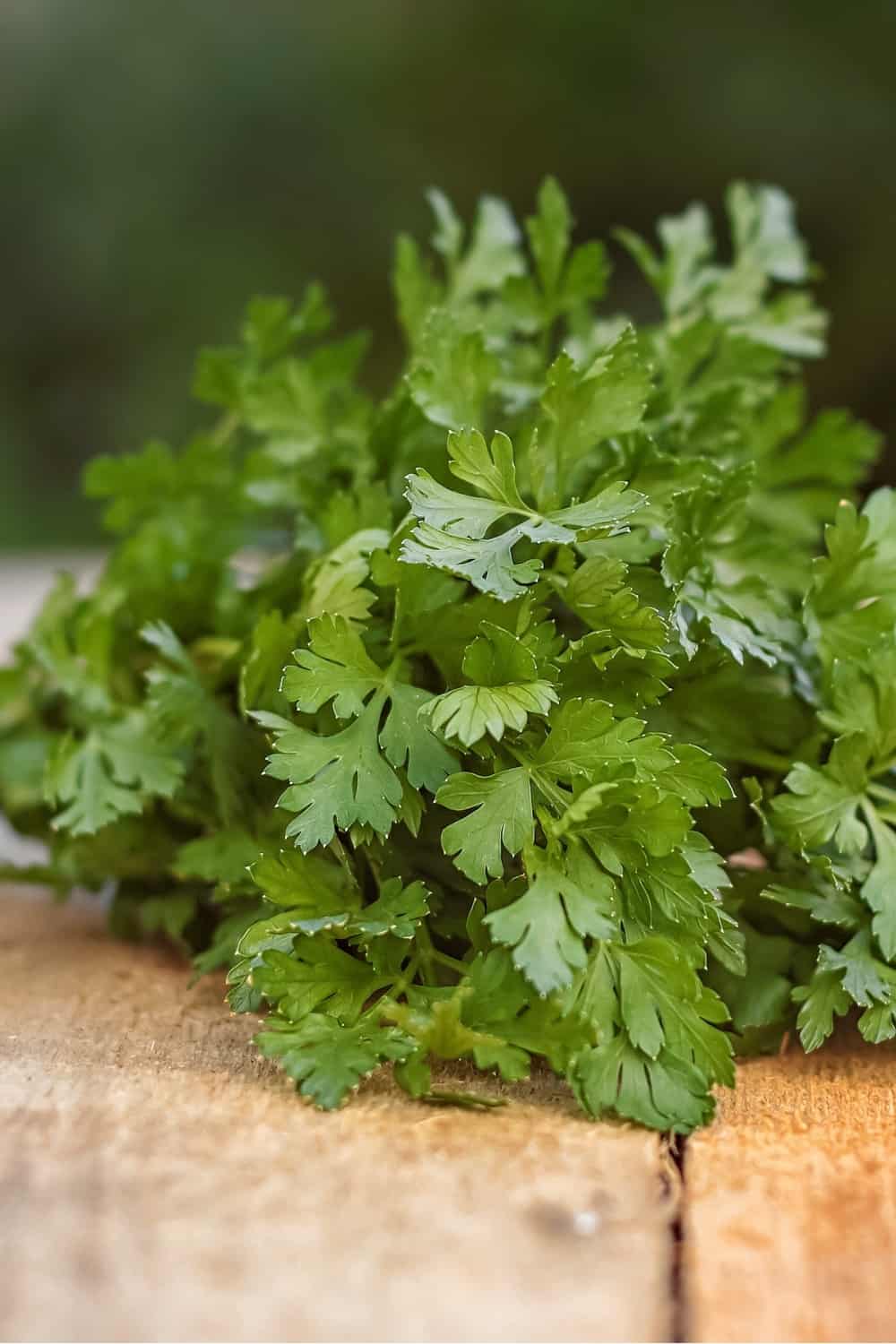
Another interesting herb on this list is coriander. Coriander is a member of the so-called Apiaceae family. It is also known by some other names like dhania, Chinese parsley, as well as cilantro.
Pros:
• The pleasant citrusy flavor of curry leaves is able to enrich almost any type of dish and add desired freshness.
• These leaves are readily available in most grocery stores and supermarkets and are more widely used in Western cuisine than curry leaves.
• Aside from the fact that they can enrich almost any type of dish, coriander leaves can also be used as a garnish to make that same dish more beautiful.
Cons:
• Coriander leaves do not have the same flavor profile as curry leaves, i.e. they don’t have that nutty taste characteristic of curry leaves and are slightly sweet, so they can not perfectly replicate the taste of a dish that requires curry leaves.
• There are some people who are allergic to coriander, so it is important to be aware of any potential allergies before using it as a substitute.
How To Use It As A Substitute:
When you decide to use coriander leaves as curry leaves substitute, you should aim for fresh leaves. They have a slightly different flavor, but their freshness and citrusy taste can add a pleasant taste to your dish.
Once you start adding it to your dish, add it in moderation because coriander can easily overpower other flavors.
The general rule of thumb is to use half a cup of freshly chopped coriander leaves for every 10 curry leaf.
Add your coriander leaves at the end of the cooking process to preserve their original flavor and aroma.
You can use coriander leaves in many dishes, especially those from Indian cuisine, but it is definitely best to use them in curries.
Extra Tip: If you don’t have fresh leaves, you can also dry cilantro, but in that case, you must use a little more, i.e. ⅔ a cup.
8. Coriander Seeds
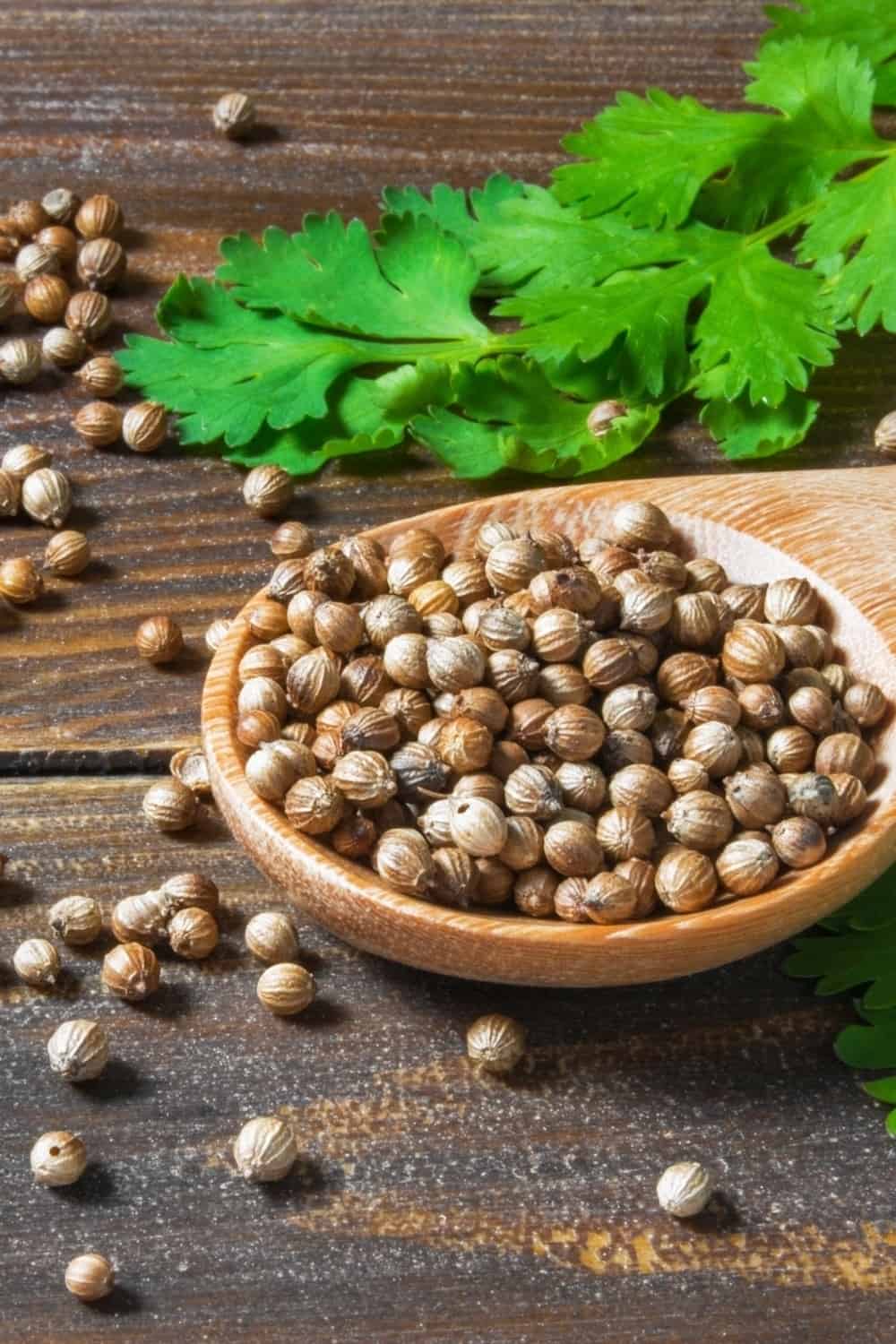
Chefs and home cooks use stems, leaves, and roots of the herb, especially in South Asian cuisine. Coriander seeds are also widely used by many chefs.
Many of them use ground coriander, but when substituting with curry leaves, it is best to use freshly ground coriander seeds.
Pros:
• Coriander seeds can provide your dish with a subtle earthy flavor.
• They are quite nutritious and they possess many bioactive phytochemicals that are accounted for a wide range of biological activities including antioxidant, anticancer, neuroprotective, and anti-inflammatory activities. (3)
Cons:
• Coriander seeds do not have the same flavor as curry leaves, so they may not be suitable for all recipes.
• They can be overpowering if used in excess, so it is important to use them in moderation.
How To Use It As A Substitute:
First thing first, it is essential that you use whole coriander seeds and avoid using pre-ground coriander powder. This is because freshly ground whole coriander seeds have fresher and more vibrant flavors.
When using them in your dish, use them in moderation because, although coriander seeds can add a similar flavor, they are stronger and more pungent.
So use 2 tsp of whole crushed coriander seeds instead of 10 fresh curry leaves.
Take into consideration that it is best to add them early in the cooking process because that will give them time to infuse the dish with their flavor.
You can use crushed coriander seeds in both dry and gravy-based dishes. Some of the most popular Indian dishes where you can add coriander seeds include Sambar, Rasam, chutneys, potato or eggplant curry, and lemon rice or tamarind rice dishes.
Extra Tip: If you want to enhance the flavor and aroma of your coriander seeds, you should toast the seeds before using them. Believe me, it worked every time!
9. Dried Curry Leaves

If you want to replace fresh curry leaves, one of the most obvious alternatives is certainly dried curry leaves. Although they can serve as a good substitute, they are not ideal, i.e. they also have their pros and cons.
Pros:
• Dried curry leaves have a similar flavor profile to fresh curry leaves which is quite logical since they are basically the same thing.
• They are also more readily available, i.e. it can be difficult to find fresh curry leaves outside of regions where they are commonly used, while dried curry leaves are more widely available in grocery stores and supermarkets.
• Although this is not directly related to the cooking process, it is not out of hand to say that dried curry leaves have a longer shelf life which makes them a convenient option to have on hand when you are out of fresh curry leaves.
Cons:
• The biggest disadvantage of dried curry leaves is the fact that they are much milder than their fresh counterparts.
• They also have a different texture, which can affect the texture of the dish in the end.
• Unlike fresh curry leaves, their dried version has a very mild aroma and, since the aroma is a huge part of the overall experience, they might not be an ideal alternative.
How To Use It As A Substitute:
If you already have dried curry leaves, it is best to use them at the beginning of the cooking process. You should let them simmer for a couple of minutes in order for dried curry leaves to release their flavors.
Since they are quite milder than fresh ones, you will have to add a larger quantity, i.e. you will have to use 15 dried curry leaves to replace 8-10 fresh curry leaves in the dish.
You can use dried curry leaves in most types of dishes that call for fresh curry leaves, including curry dishes, rice dishes, chutneys, marinades, as well as soups and stews.
Extra Tip: If you, for some reason, want to use dried curry leaves in your dish and only have fresh ones, you will have to dry them properly.
You’ll have to put them in a baking tray or a plate and let them air dry for 2-3 days on the countertop or in a fridge. After that, they will be ready for usage.
If you want to know how to exactly dry and store your curry leaves, this video will be helpful:
10. Daun Salam Leaves
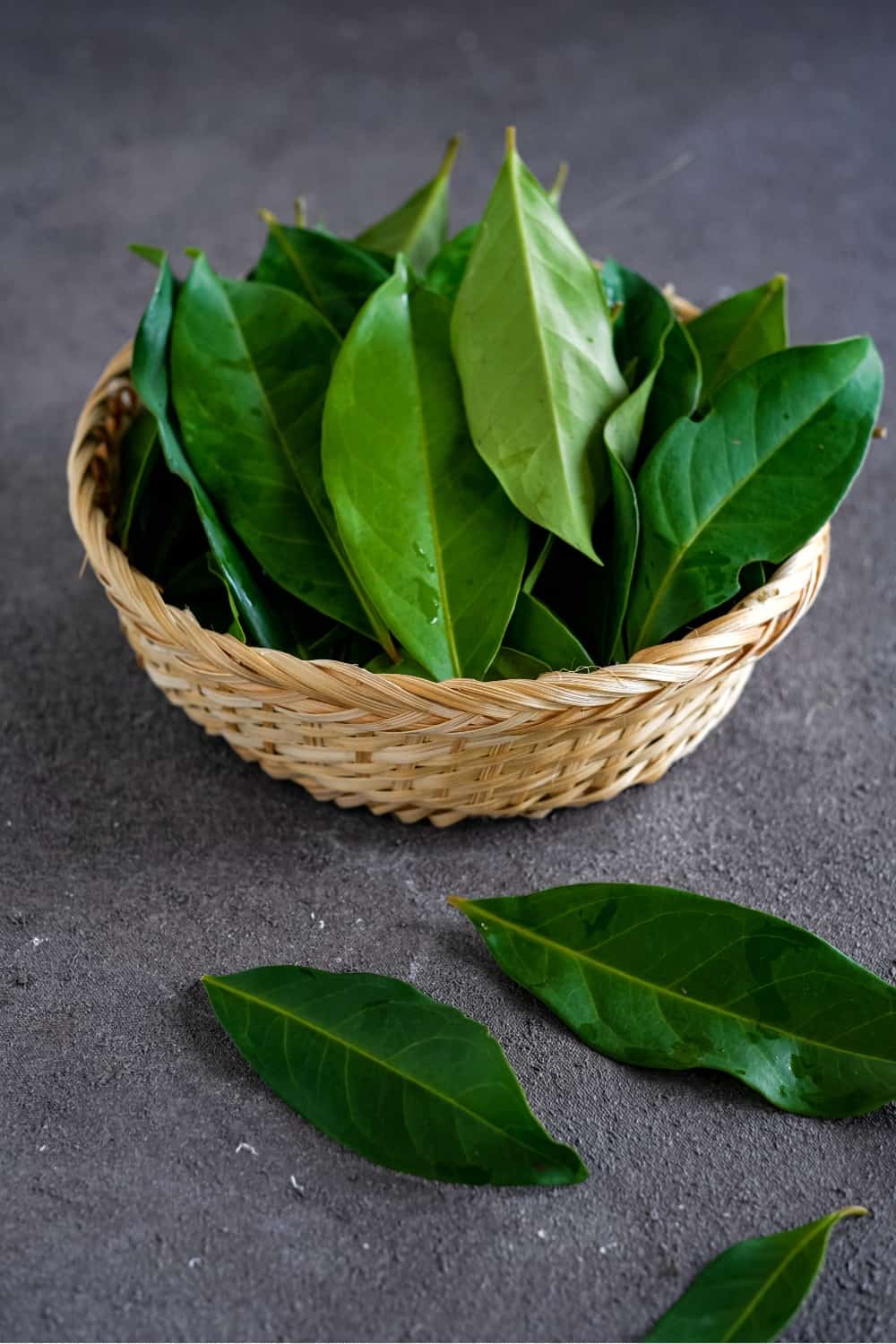
You may have never heard about it because it is not so popular on the herbal map, but this Indonesian species from the bay leaf family can actually be a very good substitute for curry leaves. So let’s take a look at what are the pros and cons.
Pros:
• Rich and complex flavor profile that can enrich many types of dishes that come from Southeast Asian cuisine, including meat and vegetable dishes.
• These two types of leaves are similar in appearance, especially in color since they both have a dark green color.
• Daun salam leaves have a longer shelf life than curry leaves.
Cons:
• Daun salam leaves have a different texture, i.e. they have a tougher texture than curry leaves, which may not be desirable in some dishes, such as soups and stews.
• Daun salam leaves also have a different aroma, i.e. they have a distinct aroma that can be described as similar to bay leaves, with a slightly earthy and herbal scent.
• These leaves are not so popular, i.e. they are not so widely known outside of Indonesia and some other Southeast countries, which makes them harder to find.
How To Use It As A Substitute:
When using daun salam leaves, you have to be aware of the fact that they have a quite strong flavor, so you need to use them in moderation.
For example, if the recipe calls for 5 curry leaves, use 1-2 daun salam leaves.
It is best to add them at the beginning of the cooking process so that they can release the flavor properly.
After the cooking is done, you should remove them from the dish because their tougher texture makes them unsuitable for eating.
You can add daun salam leaves to various types of dishes, especially those from Indonesian cuisine, but they are most suitable for dishes that contain meat.
You can also add them to veggie dishes, but the taste might not be matched and compatible.
Extra Tip: If you need to add these leaves to the vegetable dish, my recommendation is to taste the dish as it cooks and adjust the salt, pepper, and other seasonings as needed based on the type of dish.
Sources:
1. Siripongvutikorn S. Antimicrobial and antioxidation effects of Thai seasoning, Tom-Yum. LTW-Food Sci Technol 2005;38(4):347–352
2. Andrew Scholey. Anti-Stress Effects of Lemon Balm-Containing Foods. Nutrients. 2014 Nov; 6(11): 4805–4821.
3. Veda Prachayasittikul. Coriander (Coriandrum sativum): A promising functional food toward well-being. 2018 Mar;105:305-323. doi: 10.1016/j.foodres.
